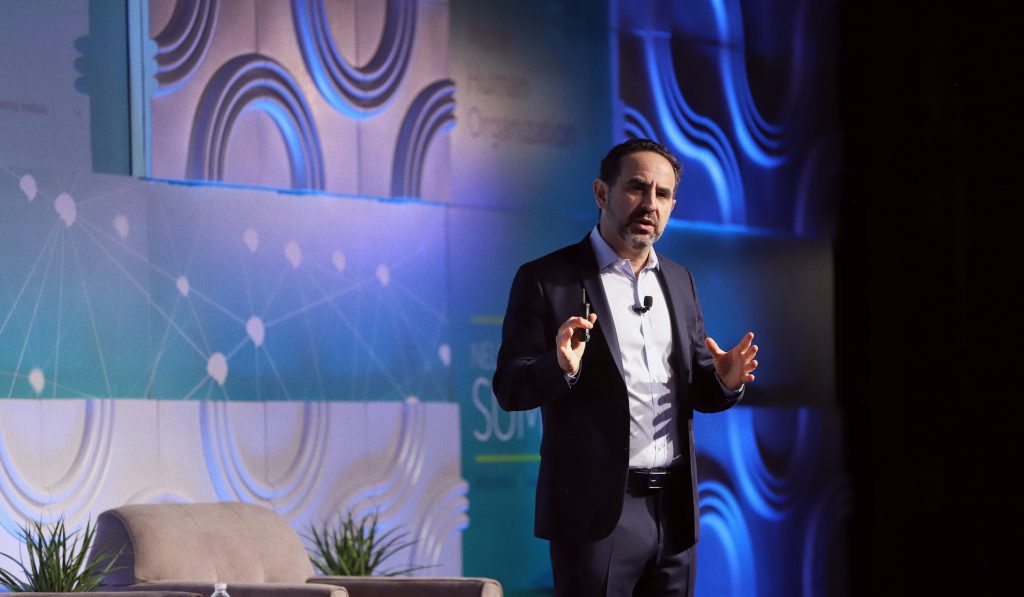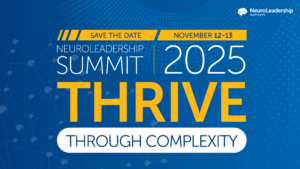This is a once-in-a-lifetime opportunity to make organizations more human.
“By following the science, it is possible to develop significantly more effective talent strategies, and drive behavior change across the globe, at a fraction of the usual cost—and in weeks, not years,” said Dr David Rock, co-founder and CEO of the NeuroLeadership Institute in Day 2’s opening keynote, “Build a Better Normal.”
Below, we’ll dig into some of the key insights and takeaways from Day 2’s session.
Build a Better Normal
A better normal is restorative. Like other natural systems, your people are a resource to sustain and regenerate rather than deplete and exploit. As Patagonia’s Dean Carter said, “We’ve taken a lot out of people. What can we put back in?”
Here’s how leaders from organizations like Zoom, Netflix, Cummins Inc., and Patagonia are going about that.
Our need for connection
Research shows that anxiety and depression have skyrocketed since March. It’s not hard to imagine why. According to a study published in the Annal of Behavioral Medicine, social isolation can be more dangerous than smoking and while we have to remain socially distant, we also have to stay connected. Our panelists shared ways they’re booting employees’ feeling of relatedness.
Zoom hosts “Connecting Conversations” for its employees. The Chief People Officer Lynne Oldham said that in honor of Thanksgiving Day, people at Zoom are sharing bite-size gratitude messages to keep positive about what we’re all experiencing.
At Cummins, Angel Franklin, Vice President of Employee Wellness, Compensation & Benefits says their program “Head, Heart, and Hands” enables employees to share what’s on their minds, what they are feeling, and what they’re working with. Angel explained that getting people to open up about their mental wellness journeys has been amazing for the organization.
At Netflix, VP Rebecca Port said employees share the “Inside Scoop,” a 10-minute slideshow of their lives and priorities.
The panelists shared that the empathy generated by people sharing their authentic selves is invaluable, and that they plan to maintain and expand those opportunities for meaningful connections moving forward.
Our need to know
Our brains crave certainty. We need to feel we have enough information to predict what’s next so we can protect ourselves and exert control over our environment.
Employees are already overwhelmed. Adding ambiguity primes people to take a negative view, even when perceiving people’s neural expressions negatively.
When you can’t provide the certainty your employees’ brains crave, you should strive to provide clarity. Transparency is a start, but NLI’s research has found that leaders think of themselves as being more transparent than their employees think they are.
NLI’s David Rock suggested three steps to provide clarity: simplify options, articulate timelines, and define principles.
Cummins Inc. had a recent experience that demonstrated simplifying options. Angel Franklin reported that they were candid about pay cuts, an option that made clear layoffs weren’t in the picture.
By articulating timelines, even just to communicate “We’ll know more….” leaders help reduce the stress of uncertainty.
Defining your organization’s principles, your “true north,” anchors your actions in your organization’s identity. Your principles provide a context for understanding what’s happening today, and serve as a touchstone for navigating the future.
Our need for control
Choice is a strong lever. Granting autonomy may give organizations the biggest return on investment.
Employees with autonomy are more engaged, productive, and motivated to expend more effort. When it’s our choice, we are more likely to think positively about, and take ownership, of negative outcomes.
David Rock shared NLI research that found twenty percent of workers do not like working from home. Of them, about 25% feel the situation would improve with the choice of which projects to work on, with whom they work, and where they work. Choice makes people feel respected. When they choose, people are likely to choose projects that hold intrinsic value for them and with which they’ll stay engaged.
At Cummins, there is a project job board where employees can choose among outstanding projects, providing a sense of autonomy and ownership.
Dr. Port of Netflix observed that many organizations are driven by the fear of the minority of employees who will take advantage of the freedom to choose projects, dress code, expenses, or vacation time. But, she thinks the benefits of autonomy outweigh the bureaucracy of enforcement. Norms can be more effective than rules and penalties.
Patagonia’s Dean Carter cautioned that autonomy requires organizations to double down on mission and values. People can make choices autonomously when they understand what the organization stands for.
NLI’s David Rock wondered whether those rules and penalties were driven by a safety bias, where the fear of making a mistake is stronger than the potential rewards of offering something new.
Join the conversation
Day 2’s keynote conversation set the stage for the Summit’s second day, blending science and application to solve today’s most pressing challenges.
Presenters and attendees will delve into topics that tie back to the science of change and building new habits during this unique time. Among upcoming session topics are focus in change, building inclusive teams, and case studies in leadership, diversity and inclusion, and performance management.
To keep up with the 2020 NeuroLeadership Summit, follow the hashtag “2020NLS” on social media, or click below to visit the Summit website where you can purchase a one-day or three-day ticket.
[action hash= “c74cc6c8-6eb0-45bf-9cc4-64043976bd57”]





